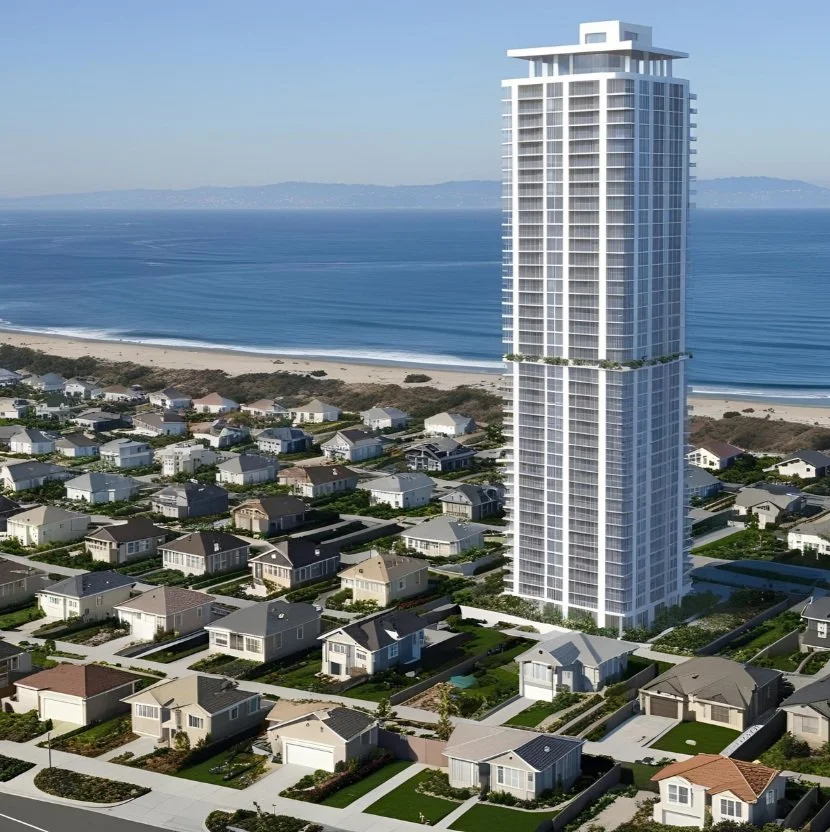Building Housing Solutions That Work for People — Not Just Developers.
From wildfire safety to affordability and ownership, NFABC empowers communities to shape real solutions that protect our future.
Update: 23-Story Tower in Pacific Beach
If This Tower Gets Rubber-Stamped, No Neighborhood Is Safe
A developer is using aggressive legal tactics to claim a 23-story building must be approved automatically. If the City accepts this, it becomes the playbook for towers across San Diego.
We’re preparing to challenge it — but legal action requires funding.
What We’re Fighting For
-

Local Control
NFABC believes that decisions about housing and zoning should be made close to home, not dictated from Sacramento. Local control means giving communities a real voice in shaping growth, balancing safety, affordability, and quality of life. By restoring authority to cities and neighborhoods, we can protect what makes each community unique while ensuring housing policies truly serve local needs.
-

Expanding Housing Opportunities
California needs more housing, but it is not enough to simply build for the sake of building. Housing must be smart, sustainable, and considerate of the communities it is meant to serve. NFABC supports solutions that expand opportunities for families, seniors, veterans, and future generations by adding the diverse options: starter homes, affordable rentals, and missing middle options, while protecting local control and community character.
This effort also creates space for youth leadership. By joining panels, sharing stories, and contributing research, young people can help shape policies that secure a future where they too can afford to live and thrive in California.
-

Make an Impact
Real change starts when neighbors come together. NFABC offers tools for young advocates, homeowners, and community members to push back against broken policies and create balanced solutions. Whether you want to learn, lead, or lend your voice, you can make a difference.
Project Watch List
-
Turquoise Tower
Proposed under state Bonus Density laws, this Pacific Beach project pushes height and density beyond local plans — raising questions about parking, infrastructure, and livability. See how state loopholes shape neighborhood growth.

-
Chalcedony & Pacifica (Chalcifica)
Using San Diego’s Bonus ADU program, this project clusters multiple units on a single-family lot, testing how far the city’s housing incentives can go in established neighborhoods.

-
Morrell St.
Another Bonus ADU case in Clairemont, where high-density construction on narrow residential streets spotlights the clash between “missing middle” housing goals and community realities.


Support Real Housing Solutions
Your Support Makes a Difference
Every dollar you donate helps us fight for responsible housing policies and stronger communities. With your support, we can continue to advocate for balanced development that benefits everyone. Whether it’s funding legal efforts or mobilizing communities, your contribution powers real change.




